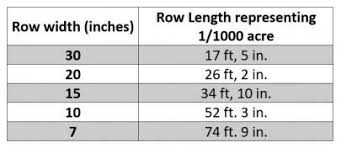If I were to ask the question, “What are the two largest management factors that come to mind when you hear soybean management factors?” What would your answer be? For myself, the top two things that come to mind are early planting date (late March and April) and herbicide resistance.
Early planting date has arguably been the biggest soybean yield driver because of the increased number of days before the plant starts to flower. This allows... Read More →
ILSOYADVISOR POST
Soybean Replant Factors
May 30, 2020
So far 2020 has brought Illinois agriculture several challenges that could impact the quality of a viable soybean stand. When making replant decisions, it’s important to understand what happened. In some fields, it’s taking anywhere from six to almost 30 days for a soybean to emerge.
 What caused a poor stand?
What caused a poor stand? - Many of the poor stands in Illinois this year are due to soil conditions at or following planting that were not ideal, dropping below 50 degrees F; the soils are cold or saturated. Seed treatments typically last for up to three weeks helping to prevent diseases, seedling blights and more while emergence is delayed.
- Some producers don’t believe that seed placement is as important for soybeans as it is for corn. However, planting speed and depth (shallow or too deep) can have a profound impact on the final stand, depending on the soil and environmental conditions (cold and wet).
- Did the seed have a low germination percentage (80%, 85%, 90%, 95% germination)?
- Was there herbicide injury? PPO herbicides can show some struggles during emergencies, and if all the stars align, a field can experience a decreased stand.
1/1000th of an Acre Method
Determining the final stand can be done in soybeans by either counting the number of plants in 1/1,000th of an acre or by using the hula-hoop method. In soybeans the common row widths are 30 inches, 20 inches and 15 inches. Below is a table the represents the length of row needed to represent 1/1,000th of an acre based on the different row widths. The factor used to figure final stand is 43,560 divided by row width in feet all over 1,000.

Source: Evaluating Soybean Stands | https://crops.extension.iastate.edu/encyclopedia/stand-assessments-soybean
Hula Hoop Method
When using the hula-hoop method, toss the hula-hoop in at least 5 locations within the field, or in the areas were the plant stand is low. Typically, this method is used for drilled soybeans.

The factor is 43,560 all divided by the hoop radius in inches squared times 3.14 divided by 144.
Calculating Expected Yields
To calculate expected yields and if they are acceptable to you, use the table below.

Insurance might make or break your final decision. For soybeans, the final planting date is June 20th. Soybeans planted on or before this date receive the full yield or revenue guarantee that you have selected prior. This is only guaranteed if the soybeans were not planted before the county-specific initial early planting date. Acres planted after June 20th will receive a reduced guarantee. It is typically considered practical to replant a damaged crop 10 days after the final date. If you choose to replant after the 20th, you have to report to the designated insurance agent three days following the final planting date. When the planting period closes, soybeans remain at 60 percent of the original guaranteed revenue.





Comments
Add new comment